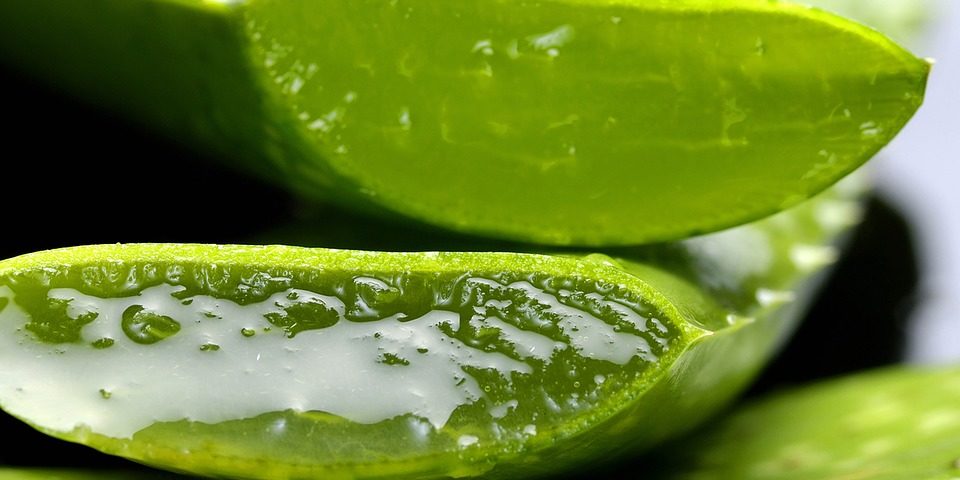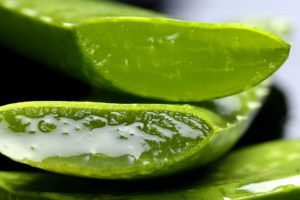Aloe, Aloe barbandensis, chinensis is an easy-to-grow evergreen succulent. Originating in the Middle East, it is now grown commercially all over the world. It makes an excellent house plant, and has become well-known in the West as a first-aid remedy, especially for burns. Many households have an Aloe in the kitchen, snipping off a leaf to treat a minor burn, insect bite, or other skin irritation.
A small piece of the leaf, split open to reveal the gel, and taped on, is a favorite treatment in my house for stubborn splinters (which as gardeners, we get fairly often). I’ve also been told that this same treatment helps remove Plantar’s warts, but I haven’t tried it myself.
Aloe gel, which is easily harvested from the inside of the spiky leaves, is a cooling, soothing skin moisturizer. It can be used daily to keep the skin healthy and glowing. If you are fortunate enough to have access to large amounts of the fresh leaf, simply split the leaf open and apply the inner gel directly to your skin. You can also buy aloe gel for topical use, look for a high percentage of aloe (95%-99%) and safer preservatives like citric acid, potassium sorbate, Vitamin E, or essential oils. For a summer moisturizer, I like to mix the gel with coconut oil. It’s a light, refreshing blend that’s perfect for use after being in the sun.
Use Aloe to treat sunburn, rashes, even breakouts. The split leaves can be used as a poultice on acne, sebaceous cysts, eczema, poison ivy rash, or pretty much any skin irritation you can think of. When you use the whole leaf, it has a stronger drawing action than the gel alone, which makes it ideal for bites, stings, rashes, and blemishes.
Taken internally, the outer leaf of the Aloe is a strong laxative. The powdered Aloe that you can buy is the outer leaf of the plant. It only takes a small dose, so it should be used carefully! The Whole Leaf gel, which you can purchase in liquid form, is much gentler, and is a favorite digestive tonic. For high-Pitta digestive symptoms like excess acid and poor absorption, an ounce or two of the fresh gel first thing in the morning works well. Aloe gel is cooling and slightly bitter, balancing the heat of Pitta.
In traditional Ayurveda, Aloe gel is considered a tonic for the female reproductive system, and is used to treat menstrual disorders, menopause, and vaginal infections. As a nutritive tonic for the reproductive system, it is taken with Shatavari. For Pitta excess it can be taken with a little Turmeric. As a general tonic, digestive, and anti-inflammatory, 1-2 ounces of the juice can be taken daily, alone or with fruit juice. It is an acquired taste, to be sure, but it blends well with strongly flavored juices like Concord Grape or Cranberry.
Whether you choose to grow a plant of your own, or buy it prepared, Aloe is a wonderful green ally for the summer months. I hope you give it a try!










Thanks for the inspiration